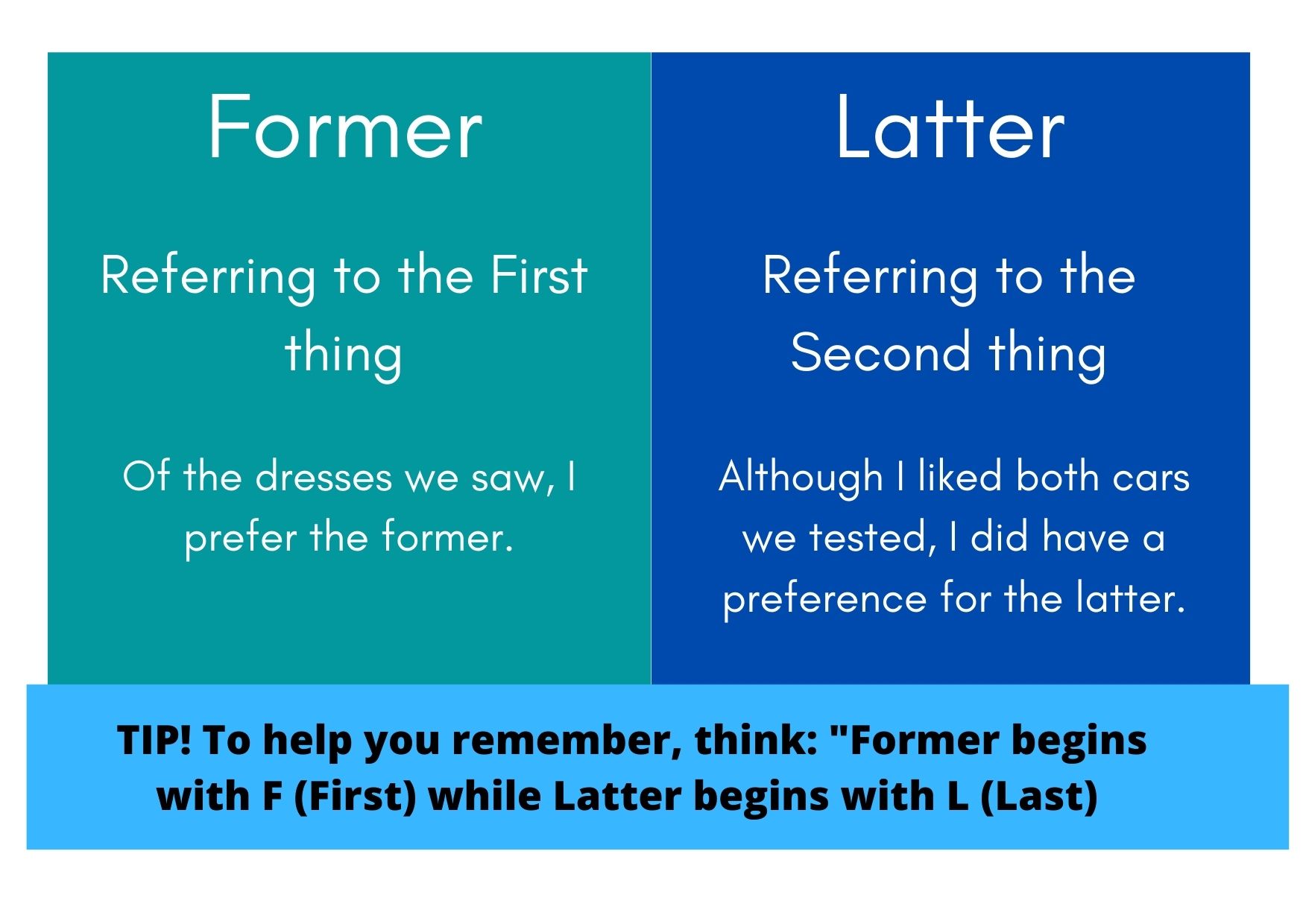The word Former refers to something that is first in the order of two or more items or things. The word Latter refers to something that is either second in a group of two things or the last in a group of many. Some usage guides dictate that you can only use these words for groups of two, but our definitions—and the words’ actual usages—reflect otherwise.
The Meanings of ‘Latter’ and ‘Former’
When describing former vs. latter, many usage guides recommend that you restrict their use to sets of two things and two things only if you must use these words. The relevant sense of latter is defined as “of or relating to; or being the second of the two sets or things or the last of several sets or things being referred to”. Former is defined as “first in order of two or more things noted or understood.” Please note that even though each of these definitions uses the word two, we allow for the chance that each of these words could refer to a larger number.

Exceptions to the Rule
I’m sure that someone out there is exclaiming ‘But the rule is so neat and simple! Why can’t we just say that former is the first of the two and latter is the second of the two?’ We could say that, but it really wouldn’t be truthful since this isn’t exactly how people use these words. We don’t make the rules about language (and neither do you, angry person reading this); we simply do our best to describe how words are used accurately. And while former and latter are mainly employed about groups of two things, there are many circumstances where they are applied to more significant numbers.
…there were three sorts of recruits:…The former of these presumably joined with a thought to an eventual captaincy.— Times Literary Supplement, Dec. 1949
Goldfish, I should clarify, are a recurring presence in this hyperactive sugar-rush of a picture, along with two understandably confused-looking performers from the American teen drama Beverly Hills 90210 and clips from Frankenheimer’s 1962 film The Manchurian Candidate. Of the three, only the latter makes sense at all.— aMatthew Bond, Mail on Sunday (London, Eng.), Oct. 2005
…although her bibliography includes Hecht, Snyder, and Daiches, she overlooks the latter’s first name.— DeLancey Ferguson, Modern Language Notes, Feb. 1957
A crucial point we should make here is that our mentioning that people often use former and latter about a part of a more significant group than two isn’t the same as our urging you to imitate this use. You might use former to indicate the first of a group of three, and we won’t think any less of you for doing it, but someone else might, and you should be mindful that numerous usage guides frown upon such use.
One might use other words in such settings, such as first or last (or last-named). Some usuage guides go so far as to recommend avoiding the use of former and latter altogether because the words may unnecessarily draw the reader’s attention backward and interfere with smooth reading. It would help if you remembered that former and latter function as conveniences for the writer and may be potential annoyances for the reader unless handled with care. In some cases, repetition of the word or phrase that former or latter might replace will better serve you.
Lastly, here is a quick tip to help you remember which is which when considering former vs. latter: Former begins with “F” (like the word First) while Latter begins with “L” (like the word last).
Related: Learn about addressing multiple people in an email or a letter.






